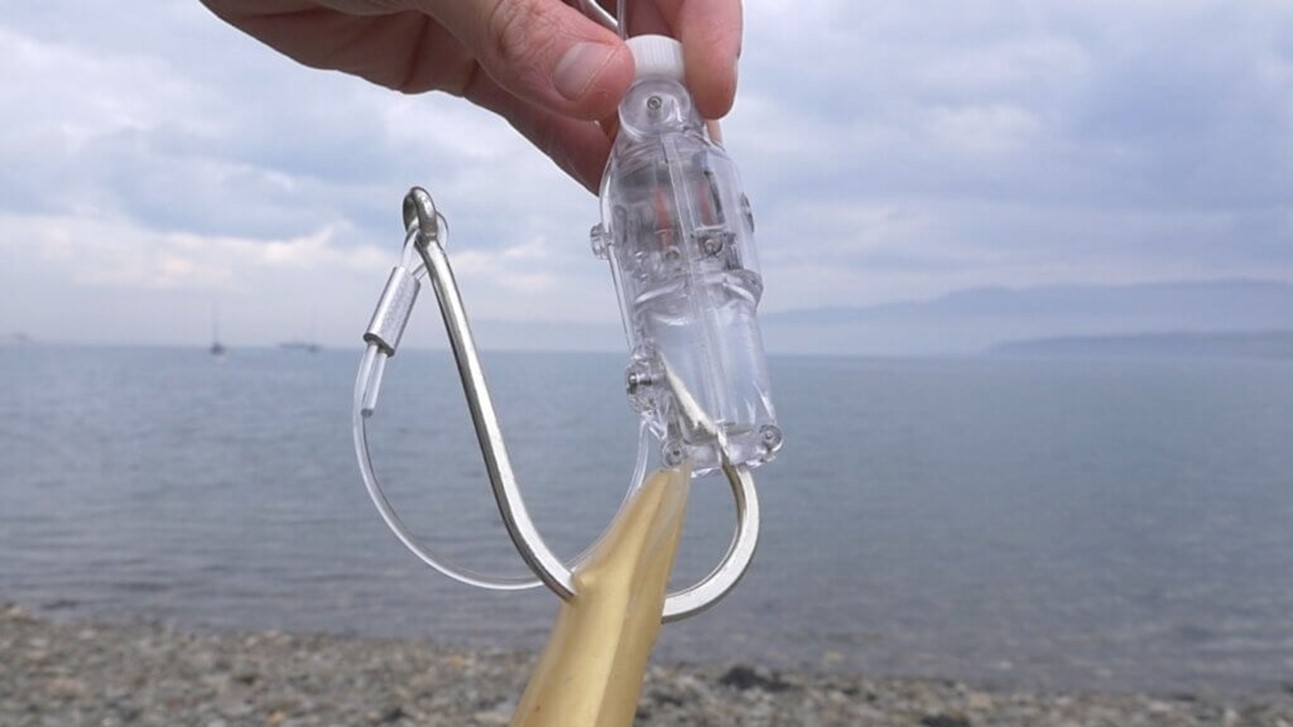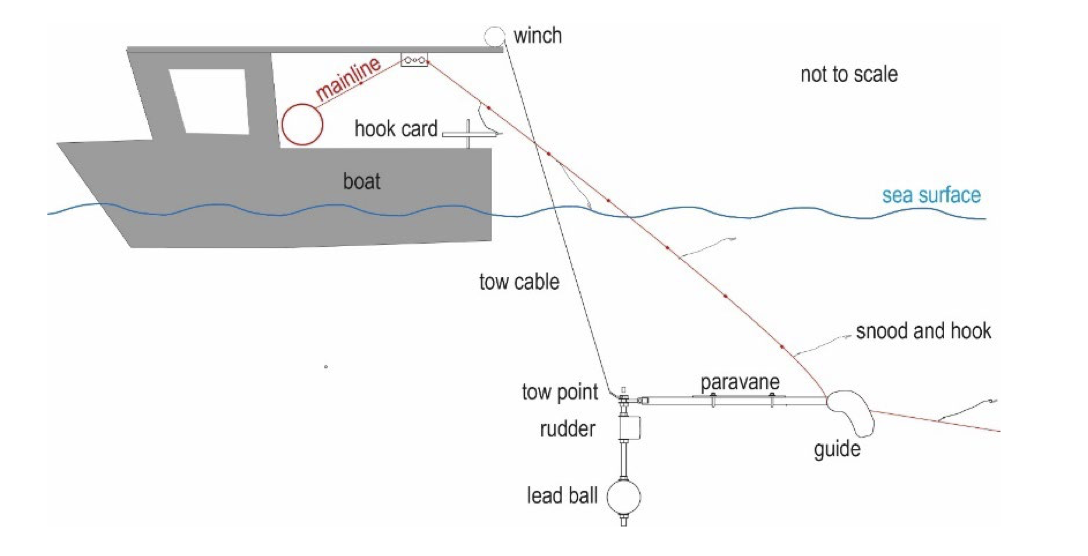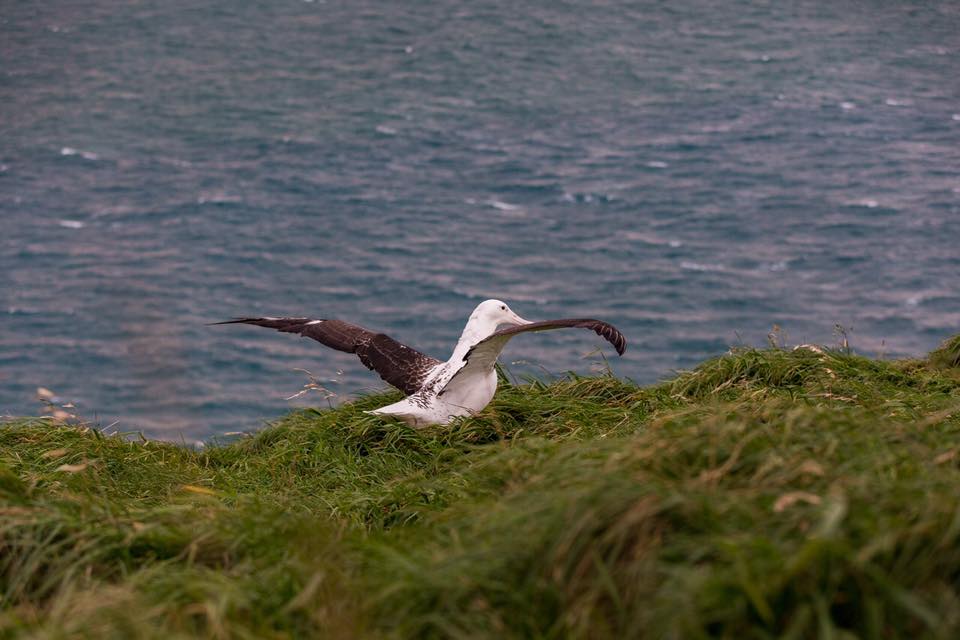 Weighted hooks including the Hookpod mini (pictured) were trialled in the project, "Demonstration of practicality and safety of alternative branchline weighting designs that reduce seabird catch risk in the Hawaii pelagic longline deep-set fishery" lead by Eric Gillman that received funding from the BREP in 2019.
Weighted hooks including the Hookpod mini (pictured) were trialled in the project, "Demonstration of practicality and safety of alternative branchline weighting designs that reduce seabird catch risk in the Hawaii pelagic longline deep-set fishery" lead by Eric Gillman that received funding from the BREP in 2019.
Funding for projects addressing fisheries bycatch has been announced by the Unites States’ National Oceanic and Atmospheric Administration (NOAA). Approximately $2.3 million USD is available for projects through the Bycatch Reduction Engineering Program (BREP).
The National Bycatch Reduction Engineering Program’s mission, as stated on the NOAA website, "[is] to support the development of technological solutions and changes in fishing practices designed to minimize bycatch of fish and protected species (including Endangered Species Act-listed fish, marine mammals, seabirds, and sea turtles) and to reduce impacts to invertebrates (including sponges, deep-sea corals, and shallow (tropical) corals.) In addition, BREP may support projects that quantify post-release mortality and identify ways to minimize mortality and injury of bycaught species (including post-release injury and mortality).”
Funding for projects is open to foreign public entities and organisations under the jurisdiction of foreign governments. Eligibility criteria can be found at, www.grants.gov under funding opportunity #NOAA-NMFS-FHQ-2024-2008210.
For further information, including examples of successful past proposals, head to the NOAA website, here.
Pre-proposals are a requirement and must be submitted before full proposals. Pre-proposals must be emailed to the BREP National Program Coordinator (
Full proposals must be received by 11:59 pm EST on March 20, 2024.
11 October 2023

 English
English  Français
Français  Español
Español  A diagram of the underwater setter from the report
A diagram of the underwater setter from the report

 Southern Giant Petrels nesting at Harmony Point, Nelson Island in maritime Antarctica; photograph by Julia Finger. Giant petrels were identified in the risk assessment published by the SCAR Antarctic Wildlife Health Network (AWHN) as at risk of becoming infected by HPAI, and transporting the virus.
Southern Giant Petrels nesting at Harmony Point, Nelson Island in maritime Antarctica; photograph by Julia Finger. Giant petrels were identified in the risk assessment published by the SCAR Antarctic Wildlife Health Network (AWHN) as at risk of becoming infected by HPAI, and transporting the virus. ACAP Parties, Ecuador and Brazil, have both signed the BBNJ Agreement. Pictured (left - right) H.E. Mr. Gustavo Manrique Miranda, Minister of Foreign Affairs and Human Mobility of the Republic of Ecuador and H.E. Mr. Mauro Luiz Iecker Vieira, Minister for Foreign Affairs of the Federative Republic of Brazil
ACAP Parties, Ecuador and Brazil, have both signed the BBNJ Agreement. Pictured (left - right) H.E. Mr. Gustavo Manrique Miranda, Minister of Foreign Affairs and Human Mobility of the Republic of Ecuador and H.E. Mr. Mauro Luiz Iecker Vieira, Minister for Foreign Affairs of the Federative Republic of Brazil